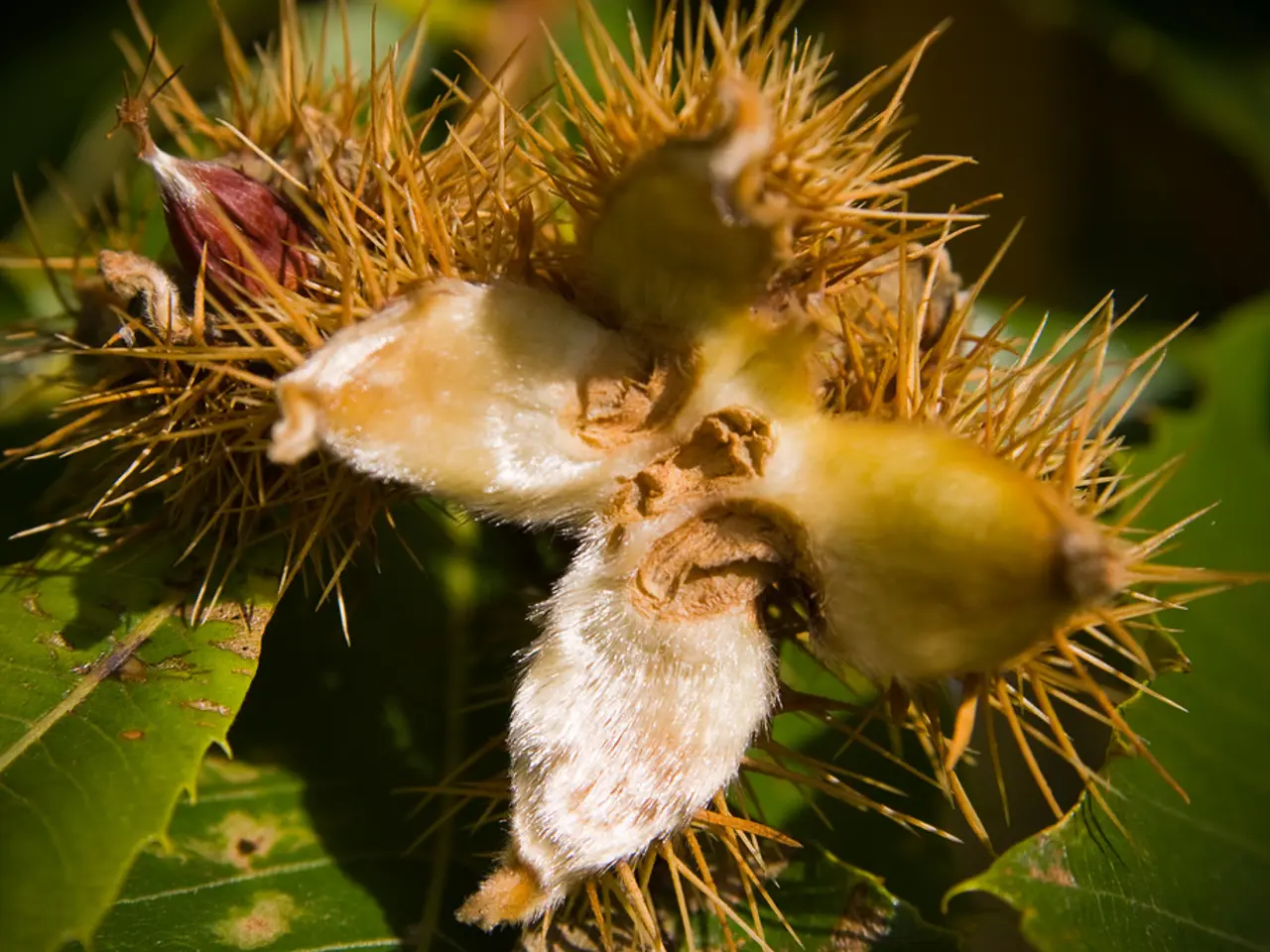Wild Shrub with Abundant Potential for Indian Agriculture: Conkerberry/Bush Plum Offers Resilience
The Bush Plum, scientifically known as Carissa spinarum, is an evergreen shrub that offers a wealth of benefits in various regions, including parts of India. Known by different names such as Vakkay, Kalakate, Jungle Karonda, or Kair, this plant is a reliable, multipurpose plant that yields more than it consumes.
This versatile plant is native to arid and semi-arid ecosystems and thrives in poor soils, making it an ideal choice for farmers dealing with deteriorated soils and unpredictable rains. Bush Plum is drought-resistant and can help restore degraded land, enhancing soil fertility and water availability for neighboring crops.
In terms of food, the mature berries of Bush Plum are full of Vitamin C and antioxidants. They are usually consumed fresh, converted into chutneys and pickles, or dried and used as a traditional remedy. The juice of the fruit is said to provide relief from gastrointestinal conditions and strengthen immunity.
Beyond its dietary value, Bush Plum also holds significant medicinal benefits. In traditional medicine, roots, leaves, and fruits of the plant are used to alleviate stomach ailments, fever, skin diseases, and cuts. While more detailed studies on Indian regional medicinal uses are limited, the plant's potential to treat ailments such as stomach issues, infections, and possibly ulcers due to its reported anti-inflammatory and antibacterial properties is promising.
To cultivate Bush Plum, it can be grown from seeds or root suckers in sandy or loamy soils. To create a live fence, Karonda saplings should be planted on a 1-meter spacing at the field boundary. This not only guards crops but also provides shelter to birds and beneficial insects.
In times of fodder shortage, goats and sheep may graze on the soft leaves and young shoots of Karonda. Moreover, dried branches of the plant can be used as firewood in traditional villages. Interestingly, Bush Plum serves as a natural live fence against stray animals due to its dense, thorny nature.
Native and traditional plants like Karonda are often overlooked in modern agriculture, but they offer optimism for farmers facing challenges such as deteriorated soils, unpredictable rains, and growing expenses. As we continue to explore and document the potential of these plants, it's clear that they have a significant role to play in sustainable agriculture and traditional medicine.
References: 1. Food and Agriculture Organization of the United Nations. (n.d.). Bush Plum (Carissa spinarum). Retrieved from https://www.fao.org/agroforestry/tree-database/44320/en/ 2. Singh, R., & Singh, M. (2014). Ethnobotany of Carissa spinarum Linn. in tribal areas of Jhabua district, Madhya Pradesh, India. Journal of Ethnobiology and Ethnomedicine, 10(1), 96. doi:10.1186/1746-0361-10-96
- The versatile Bush Plum, or Carissa spinarum, is a multipurpose evergreen shrub that thrives in poor soils, offering benefits in health-and-wellness and culinary sectors as well as environmental-science due to its ability to restore degraded land.
- In the realm of food-and-drink, the mature berries of Bush Plum are rich in Vitamin C and antioxidants, often consumed fresh, converted into chutneys, pickles, or dried for traditional remedies, with the juice providing relief from gastrointestinal conditions and strengthening immunity.
- Beyond its dietary value, Bush Plum, also known as Vakkay or Kalakate, holds significant medicinal benefits, as roots, leaves, and fruits are traditionally used to alleviate stomach ailments, fever, skin diseases, and cuts, and may treat ailments such as stomach issues, infections, and possible ulcers due to its reported anti-inflammatory and antibacterial properties.
- For farmers, Bush Plum can be cultivated from seeds or root suckers, making it a valuable addition to agribusiness and sustainable farming practices, and when planted on a 1-meter spacing at the field boundary, it serves as a natural live fence against stray animals and provides shelter to birds and beneficial insects.
- In lifestyles that rely on livestock, Bush Plum, or Kair, can help mitigate fodder shortages as goats and sheep may graze on the soft leaves and young shoots, and dried branches can be used as firewood in traditional villages.
- In the realm of education-and-self-development, understanding the potential of plants like Bush Plum is essential for future generations to discover not only their practical applications but also their role in traditional medicine and home-and-garden life.
- Financial benefits extend to the cultivation of Bush Plum, as its versatility, hardiness, and resilience make it an attractive investment for farmers striving for self-sufficient, profitable, and sustainable businesses in science, fitness-and-exercise, and sports-related industries.




